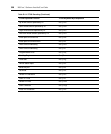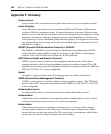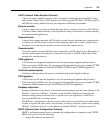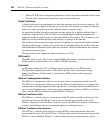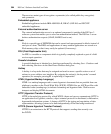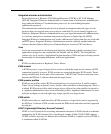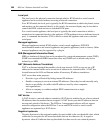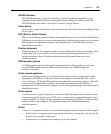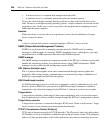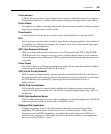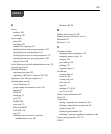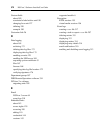
366 DSView 3 Software Installer/User Guide
Local port
The local port is the physical connection through which a KVM switch or serial console
appliance can be accessed without accessing a network connection.
For a KVM switch, the local port is typically the KVM connection at which a keyboard, mouse
and monitor can be connected directly to the switch. An onscreen display may be invoked to
control the KVM switch and access switched KVM ports.
For a serial console appliance, the local port is typically the serial connection at which a
terminal can be connected directly to the appliance (CCM appliances have a dedicated console
port). A command line interface (CLI) is used to control the appliance and access switched
serial ports.
Managed appliance
Managed appliances include KVM switches, serial console appliances, EVR1500
environmental monitor and control appliances and generic appliances (such as routers). Other
managed appliances may be supported by a plug-in.
MIB (Management Information Base)
MIB is a database of objects that can be monitored by a network management system (NMS).
SNMP uses standardized MIB formats that allow any SNMP tools to monitor any device
defined by an MIB.
NAT (Network Address Translation)
NAT is an Internet standard that enables a local-area network (LAN) to use one set of IP
addresses for internal traffic and a second set of addresses for external traffic. A NAT box
located between the LAN and Internet makes all necessary IP address translations.
NAT serves three main purposes:
• Provides a type of firewall by hiding internal IP addresses.
• Enables a company to use more internal IP addresses. Since they're used internally only,
there's no possibility of conflict with IP addresses used by other companies
and organizations.
• Allows a company to combine multiple ISDN connections into a single
Internet connection.
NAT device
A NAT device is a network address translation (NAT) device enables the use of more internal
IP addresses than the number that are assigned. A NAT device provides IP addresses that are
not exposed outside of the device. The DSView 3 management software will not support
network configuration where the DSView 3 server and KVM switch or serial console
appliance are separated by a NAT device.
Negative hysteresis
Negative hysteresis is the unsigned number of counts added to the raw threshold value, which
creates the re-arm point for all sensor thresholds that are less than zero (0). A negative
hysteresis value of 0 indicates that any thresholds less than zero do not contain hysteresis.



